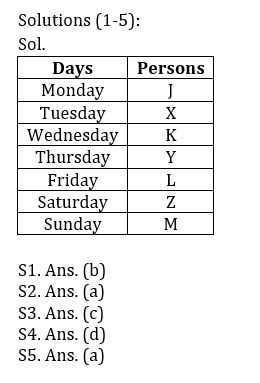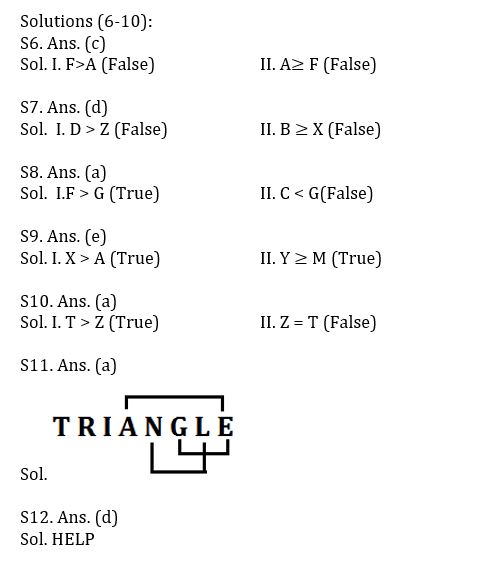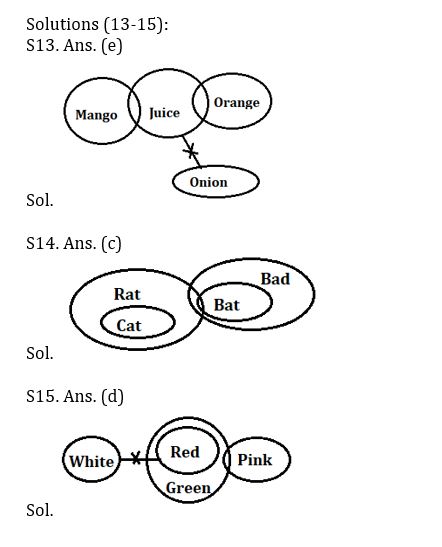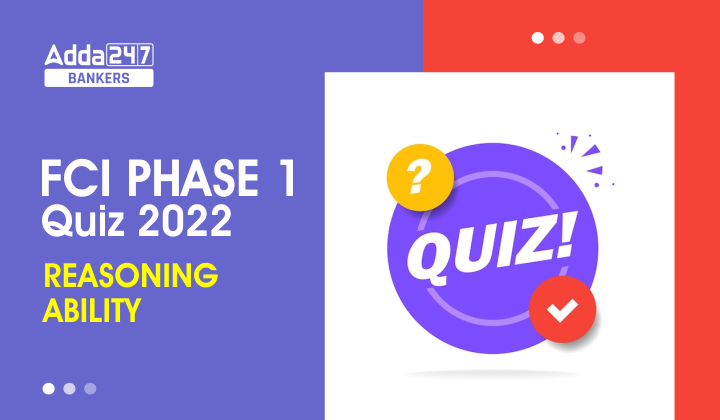Directions (1-5): Study the following information carefully and answer the questions given below:
Seven persons i.e., J, X, K, Y, L, Z and M goes to a party on different days of the week. Week starting from Monday. No two persons go to party on the same day. Two persons go to party between K and Z. K goes to party before Z. One person goes to party between K and J. J does not go to party just before Z. Y goes to party immediately before L. X goes to party before M but after J.
Q1. Four of the following five are alike in a certain way and hence they form a group. Which one of the following does not belong to that group?
(a) J-X
(b) X-L
(c) K-Y
(d) L-Z
(e) Z-M
Q2. Who among the following goes to party on Monday?
(a) J
(b) X
(c) K
(d) Y
(e) None of these
Q3. The number of persons go to party between J and L, is same as the number of persons go to party between K and ___?
(a) X
(b) Y
(c) M
(d) Z
(e) None of these
Q4. Who among the following goes to party just before Z?
(a) J
(b) X
(c) K
(d) L
(e) None of these
Q5. Who among the following goes to party at last?
(a) M
(b) J
(c) Y
(d) Z
(e) None of these
Direction (6-10): In these questions, relationship between different elements is show in the statements. The statements are followed by conclusions. Study the conclusions based on the given statements and select the appropriate answer:
(a) If only conclusion I follows.
(b) If only conclusion II follows.
(c) If either conclusion I or II follows
(d) If neither conclusion I nor II follows.
(e) If both conclusions I and II follow.
Q6. Statements: D > A, F = E ≤B, D>B, C<B
Conclusions I. F>A II. A≥ F
Q7. Statements: A > Z < B ≥ C > X < D
Conclusions I. D > Z II. B ≥ X
Q8. Statements: A > B, C ≤B, D < E = B, E < F, G ≤ B
Conclusions I.F > G II. C < G
Q9. Statements: X > Y ≥ Z = M > A ≥B
Conclusions I. X > A II. Y ≥ M
Q10. Statements: P < Q > R = Z < S ≤ X < T
Conclusions I. T > Z II. Z = T
Q11. How many pairs of letters are there in the word ‘TRIANGLE’, each of which have as many letters between then in the word as they have between then in the English alphabet (Both Forward and Backward direction)?
(a) Three
(b) One
(c) Two
(d) More than Three
(e) None
Q12. How many words can be formed from the 1st, 4th, 7th and 8th letter of a word ‘PUBLISHED’ by using each letter once in the word?
(a) More than Three
(b) Three
(c) Two
(d) One
(e) None
Directions (13-15): In each of the questions below some statements are given followed by some Conclusions. You have to take the given statements to be true even, if they seem to be at variance from commonly known facts. Read all the conclusions and then decide which of the given conclusions logically follows from the given statements disregarding commonly known facts.
(a) If both conclusions I and II follow.
(b) If either conclusion I or II follows.
(c) If neither conclusion I nor II follows.
(d) If only conclusion II follows.
(e) If only conclusion I follows.
Q13. Statements:
Only a few Mango is Juice
Some juice are Orange
No Juice is Onion
Conclusion:
I: All orange can never be onion
II: All mango can be onion
Q14. Statements:
Only rat is cat
Some rat is bat
All bat is bad
Conclusion:
I: Some cat is bad is a possibility
II: All Rat is Bat is a possibility
Q15. Statements:
All Red are Green
Some green are Pink
No Red is White
Conclusions:
- Some Pink are not white
- Some Green are not white
Solutions








 GA Capsule for SBI Clerk Mains 2025, Dow...
GA Capsule for SBI Clerk Mains 2025, Dow...
 The Hindu Review October 2022: Download ...
The Hindu Review October 2022: Download ...
 ECGC PO Scorecard 2025 Out, Check Marks
ECGC PO Scorecard 2025 Out, Check Marks




